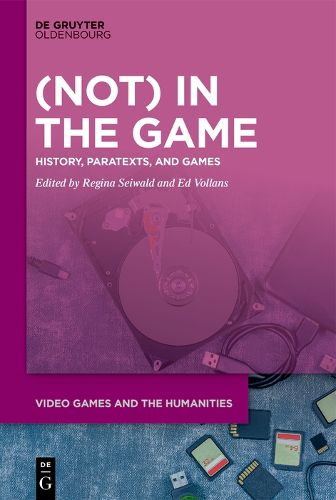Readings Newsletter
Become a Readings Member to make your shopping experience even easier.
Sign in or sign up for free!
You’re not far away from qualifying for FREE standard shipping within Australia
You’ve qualified for FREE standard shipping within Australia
The cart is loading…






This title is printed to order. This book may have been self-published. If so, we cannot guarantee the quality of the content. In the main most books will have gone through the editing process however some may not. We therefore suggest that you be aware of this before ordering this book. If in doubt check either the author or publisher’s details as we are unable to accept any returns unless they are faulty. Please contact us if you have any questions.
How do games represent history, and how do we make sense of the history of games? The industry regularly uses history to sell products, while processes of creation and of promotion leave behind markers of a game's history. The access to this history is often granted by so-called paratexts, which are accompanying elements orbiting texts. Exploring this fully, case studies in this work move the focus of debate from the games themselves to wider, ancillary materials and ask how history is used in, and how we can use history to study games.
$9.00 standard shipping within Australia
FREE standard shipping within Australia for orders over $100.00
Express & International shipping calculated at checkout
This title is printed to order. This book may have been self-published. If so, we cannot guarantee the quality of the content. In the main most books will have gone through the editing process however some may not. We therefore suggest that you be aware of this before ordering this book. If in doubt check either the author or publisher’s details as we are unable to accept any returns unless they are faulty. Please contact us if you have any questions.
How do games represent history, and how do we make sense of the history of games? The industry regularly uses history to sell products, while processes of creation and of promotion leave behind markers of a game's history. The access to this history is often granted by so-called paratexts, which are accompanying elements orbiting texts. Exploring this fully, case studies in this work move the focus of debate from the games themselves to wider, ancillary materials and ask how history is used in, and how we can use history to study games.